#Harlem Hospital Center
Text

Today We Honor Dr.Josephine English
Dr. Josephine English was an American gynecologist who was the first black woman to open a private practice in New York. She was also known for her work in real estate and health care, in addition to her philanthropy towards the arts.
English was born on December 17, 1920 to Jennie English and Whittie Sr. in Ontario, Virginia. She moved to Englewood, New Jersey in 1939. Her family was one of the first black families in Englewood. She attended Hunter College for her bachelor’s degree until 1949, and earned her Master’s in Psychology at New York University. She initially wanted to become a psychiatrist, but ended up choosing gynecology after discovering her interest at Meharry Medical College where she earned her medical degree in gynecology.
Dr.Josephine English opened her practice at Harlem Hospital. Once in Brooklyn, she opened up a women’s health clinic in Bushwick in 1956, as well as another in Fort Greene two decades later. During her career, English helped deliver 6,000 babies, including the children of Malcolm X, Betty Shabazz, and Lynn Nottage.
English’s interest in health care lead her establish the Adelphi Medical Center and child care programs, such as Up the Ladder Day Care and After School Program. Her passion for theater led her to establish the Paul Robeson Theater from a dilapidated church. She helped actors create performances to educate the populace on health and nutrition.
CARTER™️ Magazine
#carter magazine#carter#historyandhiphop365#wherehistoryandhiphopmeet#history#cartermagazine#today in history#staywoke#blackhistory#blackhistorymonth#drjoesphineenglish
69 notes
·
View notes
Text
hiiiii everyone im going to make you look at art <3 okay <3


first up we got two photos from august sander's people of the twentieth century, a decades long project he never finished aimed at identifying and organizing the "types" of people in early twentieth century germany. in photos for this project he usually identified people along socio-economic and geographic lines. on the left we have officer, world war i, cologne (1914) and on the right we have boxers, cologne (1928). museum had a bunch of sander on display and they paired it with the shortcut to the systematic life: superficial life (2002) by tsui kuang-yu, which is outside the scope of this post but super interesting so i encourage everyone to look it up lol

up next: the junkers officer (1934) by george grosz, another artist associated with neue sachlichkeit/new objectivity. im not well versed in german art but recently i have been so intrigued by leftist art of the weimar republic and it felt simply serendipitous. unfortunately by the time i saw this the museum was closing in 15 minutes so i had to rush out </3 SAD

this is air war (1944) by ralston crawford. first time i heard of this artist! during wwii he served as chief of the visual presentation unit of the weather division of the army air corps in washington dc and southeast asia.
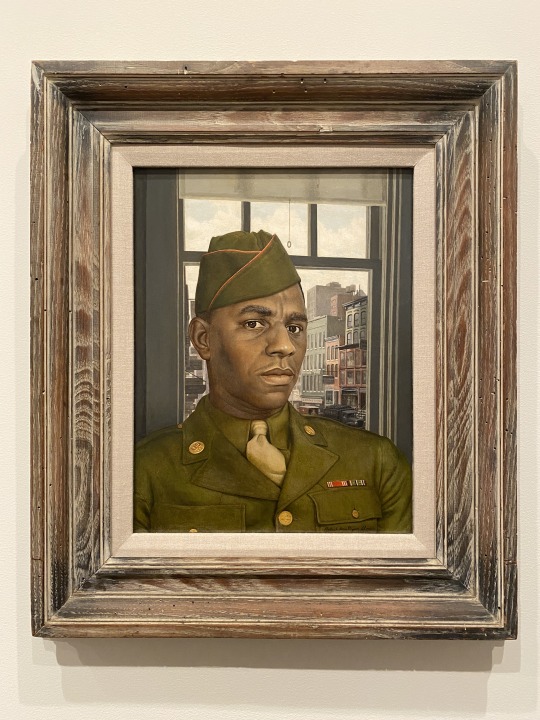
negro soldier (1945) by robert smullyan sloan. sloan was drafted in 43 and illustrated army educational materials and posters for war bonds. the wall label says the title was given by the artist, which makes me think sloan didn't personally know this guy, which makes me very curious about the circumstances of its production. no name is given to the sitter, but he served in the european-african-middle eastern campaign in the army and was awarded a good conduct medal. sloan has a drawing at the met (station hospital [1943-44] ), but unfortunately i can't find much else about him online that might help contextualize this painting.
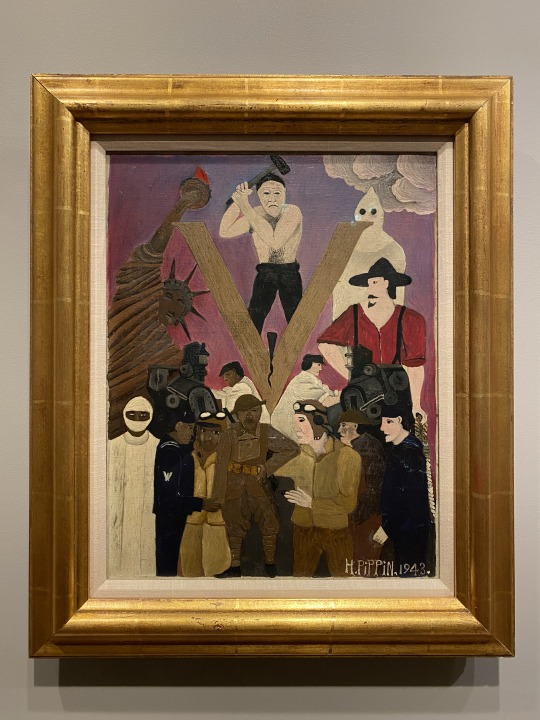
i think it pairs really well with this horace pippin from 1943 called mr. prejudice. pippin served in wwi with the harlem hellfighters, and the soldier at center might be a self portrait. he has a pretty good amount of paintings about the war actually -- i normally associate him with landscapes for some reason, though i think thats just because the pippin at my local art museum is a landscape lmao. his illustrated war journals are digitized at the archives of american art if you want to check it out!
up next are some pieces of interest that i want to share but about which i otherwise have little to say
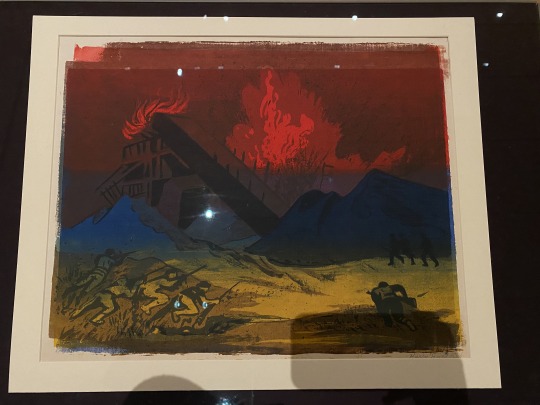

L: untitled (military maneuvers at an abandoned mine) (1940-42) by harry gottlieb
R: italy goes to war (1941) by arthur dove
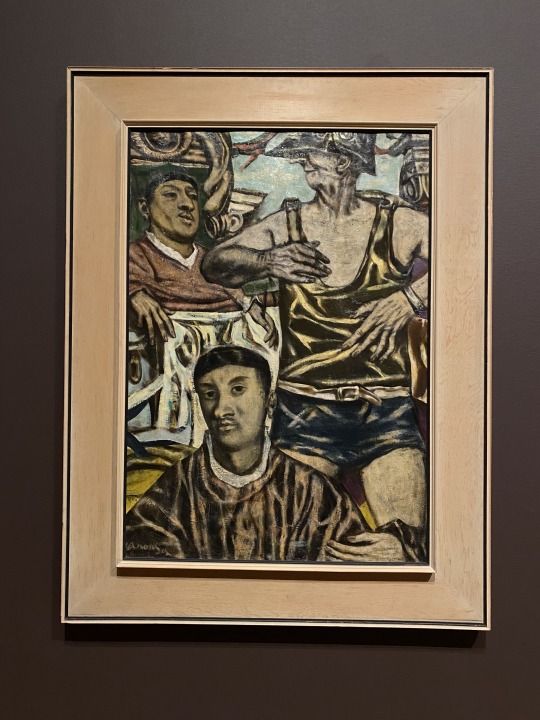
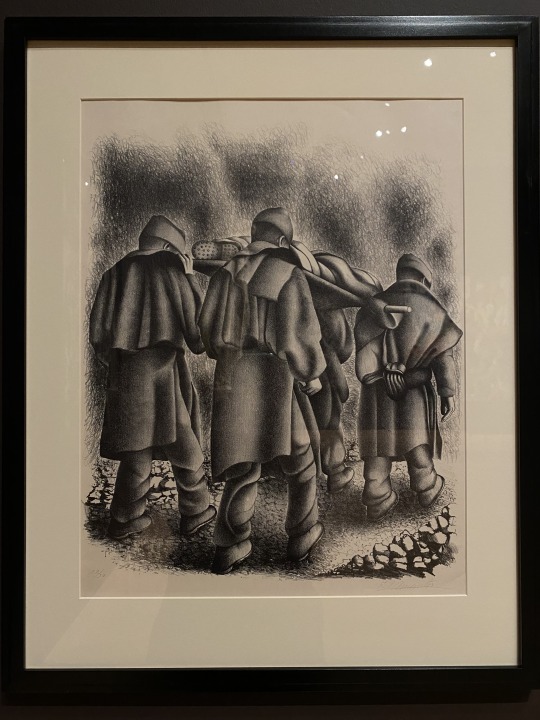
L: christ before pilate (1949) by david aronson. wall text wants us to note the soldier's helmet is german
R: the funeral (1949) by francisco dosamantes
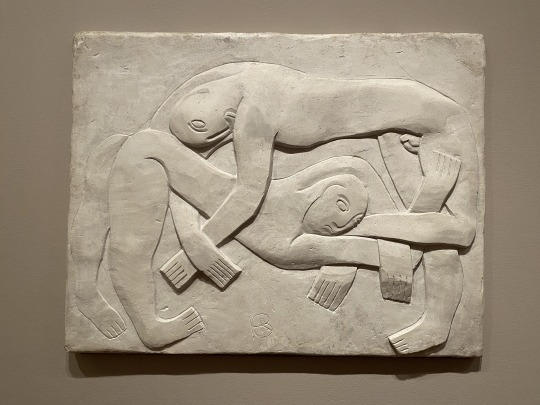
ending with this delightful 1914 the wrestlers by henri gaudier-brzeska, whom the label quotes as saying, "i went to see the wrestlers -- God! i have seldom seen anything so lovely... they fought with amazing vivacity and spirit, turning in the air, falling back on their heads, and in a flash were up again on the other side, utterly incomprehensible." something about wrestling/boxing that make men gay as fuck. beautiful
15 notes
·
View notes
Text
Monday, April 22, 2024
The Town at the Center of a Supreme Court Battle Over Homelessness
(NYT) Inside a warming shelter, Laura Gutowski detailed how her life had changed since she became homeless two and a half years ago in Grants Pass, a former timber hub in the foothills of southern Oregon. “I never expected it to come to this,” Ms. Gutowski, 55, said. She is one of several hundred homeless people in this city of about 40,000 that is at the center of a major case before the Supreme Court on Monday with broad ramifications for the nationwide struggle with homelessness. After Grants Pass stepped up enforcement of local ordinances that banned sleeping and camping in public spaces by ticketing, fining and jailing the homeless, lower courts ruled that it amounted to “cruel and unusual punishment” by penalizing people who had nowhere else to go. Many states and cities that are increasingly overwhelmed by homelessness are hoping the Supreme Court overturns that decision. They argue that it has crippled their efforts to address sprawling encampments, rampant public drug use and fearful constituents who say they cannot safely use public spaces. That prospect has alarmed homeless people and their advocates, who contend that a ruling against them would lead cities to fall back on jails, instead of solutions like affordable housing and social services.
In New York City, Most Major Crimes Are Down, But Assaults Are Up
(NYT) Just before noon last Saturday, a 9-year-old girl was with her mother at Grand Central Terminal when a man strode up to the child and, without warning, punched her in the face. The child, dizzy and in pain, was taken to the hospital. Jean Carlos Zarzuela, 30, a man who had been staying in a homeless shelter in East Harlem, was quickly arrested. It was among a number of recent assaults that have unnerved New Yorkers, who have seen a rash of attacks reported on the streets and on the subway. Police leaders and Mayor Eric Adams have trumpeted sharp decreases in the number of murders, rapes, robberies and burglaries since 2022. Still, assaults continue to vex police and city leaders. Felony assaults, a major crime category defined as an attack where a dangerous weapon is used or a serious injury results, are up in recent years. So are misdemeanor assaults, such as the one at Grand Central, in which a victim is punched, kicked or hit but no weapon is used.
Blinken will be the latest top US official to visit China in a bid to keep ties on an even keel
(AP) Secretary of State Antony Blinken will travel to China this coming week as Washington and Beijing try to keep ties on an even keel despite major differences on issues from the path to peace in the Middle East to the supply of synthetic opioids that have heightened fears over global stability. The rivals are at odds on numerous fronts, including Russia’s war in Ukraine, Taiwan and the South China Sea, North Korea, Hong Kong, human rights and the detention of American citizens. The United States and China also are battling over trade and commerce issues, with President Joe Biden announcing new tariffs on imports of Chinese steel this past week. The State Department said Saturday that Blinken, on his second visit to China in less than a year, will travel to Shanghai and Beijing starting Wednesday for three days of meetings with senior Chinese officials, including Foreign Minister Wang Yi. Talks between Blinken and Chinese President Xi Jinping are expected, although neither side will confirm such a meeting is happening until shortly before it takes place.
Ecuadorians head to polls to toughen fight against gangs behind wave of violence
(AP) Ecuadorians head to the polls Sunday in a referendum touted by the country’s fledgling leader as a way to crack down on criminal gangs behind a spiraling wave of violence. The majority of 11 questions posed to voters focus on tightening security measures. Proposals include deploying the army in the fight against the gangs, loosening obstacles to extradition of accused criminals and lengthening prison sentences for convicted drug traffickers. Ecuador, traditionally one of South America’s most peaceful countries, has been rocked in recent year by a wave of violence, much of it spilling over from neighboring Colombia, the world’s largest producer of cocaine. Last year, the country’s homicide rate shot up to 40 deaths per 100,000, one of the highest in the region.
Wave of narco-violence stuns Argentina city
(AP) The order to kill came from inside a federal prison near Argentina’s capital. Unwitting authorities patched a call from drug traffickers tied to one of the country’s most notorious gangs to collaborators on the outside. Hiring a 15-year-old hit man, they sealed the fate of a young father they didn’t even know. At a service station on March 9 in Rosario, the picturesque hometown of soccer star Lionel Messi, 25-year-old employee Bruno Bussanich was whistling to himself and checking the day’s earnings just before he was shot three times from less than a foot away, surveillance footage shows. The assailant fled without taking a peso. It was the fourth gang-related fatal shooting in Rosario in almost as many days. Authorities called it an unprecedented rampage in Argentina, which had never witnessed the extremes of drug cartel violence afflicting some other Latin American countries.
Thousands protest in Spain’s Canary Islands over mass tourism
(Reuters) Thousands of people protested in Tenerife on Saturday, calling for the Spanish island to temporarily limit tourist arrivals to stem a boom in short-term holiday rentals and hotel construction that is driving up housing costs for locals. Holding placards reading “People live here” and “We don’t want to see our island die”, demonstrators said changes must be made to the tourism industry that accounts for 35% of gross domestic product (GDP) in the Canary Islands archipelago. Demonstrators say local authorities should temporarily limit visitor numbers to alleviate pressure on the islands’ environment, infrastructure and housing stock, and put curbs on property purchases by foreigners.
Moscow says 50 Ukrainian drones shot down as attacks spark fires at Russian power stations
(AP) Ukraine launched a barrage of drones across Russia overnight, the Defense Ministry in Moscow said Saturday, in attacks that appeared to target the country’s energy infrastructure. Fifty drones were shot down by air defences over eight Russian regions, including 26 over the country’s western Belgorod region close to the Ukrainian border. Two people died during the overnight barrage. Ukrainian officials normally decline to comment about attacks on Russian soil. However, many of the drone strikes appeared to be directed toward Russia’s energy infrastructure.
Ukrainian and Western leaders laud US aid package while the Kremlin warns of ‘further ruin’
(AP) Ukrainian and Western leaders on Sunday welcomed a desperately needed aid package passed by the U.S. House of Representatives, as the Kremlin warned that passage of the bill would “further ruin” Ukraine and cause more deaths. Ukrainian commanders and analysts say the long-awaited $61 billion military aid package — including $13.8 billion for Ukraine to buy weapons — will help slow Russia’s incremental advances in the war’s third year — but that more will likely be needed for Kyiv to regain the offensive. In Russia, Kremlin spokesman Dmitry Peskov on Saturday called the approval of aid to Ukraine “expected and predictable.” The decision “will make the United States of America richer, further ruin Ukraine and result in the deaths of even more Ukrainians, the fault of the Kyiv regime,” Peskov was quoted as saying by Russian news agency Ria Novosti.
Time Is Running Out for Rahul Gandhi’s Vision for India
(NYT) Rahul Gandhi stood in a red Jeep, amid a churning crowd in Varanasi, trying to unseat the Indian government. It was the morning of Feb. 17—Day 35 of a journey that began in the hills of Manipur, in India’s northeast, and would end by the ocean in Mumbai, in mid-March. In total, Gandhi would cover 15 states and 4,100 miles, traveling across a country that once voted for his party, the Indian National Congress, almost by reflex. No longer, though. For a decade, the Congress Party has been so deep in the political wilderness, occupying fewer than a tenth of the seats in Parliament, that even its well-wishers wonder if Gandhi is merely the custodian of its end. Indian pundits and journalists bicker about many things, but on this point they’re unanimous: Only a miracle will halt the B.J.P. Still, it falls to Gandhi, steward of his enfeebled party, to try. One of Modi’s successes has been not just to trounce the Congress Party but also to persuade people that the party has weakened India and emasculated its Hindus. Through his cult of personality, Modi is fulfilling a century-old project, recasting India as a Hindu nation, in which minorities, particularly Muslims, live at the sufferance of the majority.
No let-up for Gazans while world focused on Iran attack
(BBC) While the media’s glare in the Middle East this past week was diverted to Iran’s dramatic missile and drone attack on Israel, there has been no let-up in fighting in Gaza. Dozens of Palestinians were killed daily—including many children, according to figures from the Hamas-run health ministry. It now says Israel has killed more than 34,000 people in Gaza since the start of the war. As Israel’s forces continue with their efforts to destroy Hamas, they have conducted small-scale, often deadly operations, from the top to the bottom of the territory over the past week. On Tuesday, in the middle of Gaza, relatives clutching limp and bloodstained bodies of small boys and girls rushed from al-Maghazi refugee camp to al-Aqsa Martyrs’ hospital in nearby Deir al-Balah. Medics at the hospital said that at least 12 people were killed and some 30 injured by shelling in al-Maghazi. “They were playing in the street. Why were they struck? They weren’t in any position close to Israeli forces,” one man told the BBC.
Deadly heat wave surges through West Africa
(AP) Street vendors in Mali’s capital of Bamako peddle water sachets, ubiquitous for this part of West Africa during the hottest months. This year, an unprecedented heat wave has led to a surge in deaths, experts say, warning of more scorching weather ahead. The heat wave began in late March, as many in this Muslim majority country observed the holy Islamic month of Ramadan with dawn-to-dusk fasting. On Thursday, temperatures in Bamako reached 44 degrees Celsius (111 Fahrenheit) and weather forecasts say it’s not letting up anytime soon. The city’s Gabriel-Touré Hospital reported 102 deaths in the first four days of the month, compared to 130 deaths in all of April last year. It’s unknown how many of the fatalities were due to the extreme weather.
2 notes
·
View notes
Text
5/30/22 [civil: a poem from the viewpoint of Audre Lorde]
I bought respite out on an island
I harm and hurt and heal
I redeem myself from my mother’s grasp
Out of the Harlem streets she found ideal.
Martha dances, cloaked in blackest night
We had loved and had lowered our heads to the floor
Jesse Helms, brooding and smoking and
Gagging and shouting ‘til we started a war
Day three day four day ten
Save me the ability to hold my own pen
For civilians whisper in the folds of their clothes:
“Fear not, my child, a new flower shall grow.”
See the monitors glow when they held me accountable
Martha, you wonder, how did you move on?
I will tear the seams from your hospital gown
And weave your embrace to my center.
Beneath my heaving heart, I chase–
teardrops of sugary ginger-filled sun
When I was a child, immunity flowed
And now so transparent, an offbeat clap of rain.
If we are silenced, then meet me at midnight.
And when hope is fleeting, chin up and hold tight.
For struggle, morality’s patience wanes thin
Your young mouth will smile when my passion cries out.
If I am here, then do not place me apart
And if I have left; then please wish me away
For I have harrowed this long with the uproar,
And I will not be civil.
#original poem#poetry#queer poetry#young poets#audre lorde#created this for an english assignment lol#audre lorde was a fucking powerhouse man#remembrance#morallyrainyrambles
2 notes
·
View notes
Text

Photo courtesy of “Environmental History in Detroit” University of Michigan
In Detroit, there are two precious historic places that have been lost to us: Black Bottom and Paradise Valley. Resembling famous epicenters of African American culture, history, and enterprise like New Orleans’s Bourbon Street and New York’s East Harlem, Black Bottom was a significant stronghold of Detroit’s African American population from the 1920s all the way to the 1960s.
So what exactly was Black Bottom and what happened to it? Black Bottom was an enclave located on Detroit’s near east side, bordered by Gratiot Avenue, Brush Street, Vernor Highway, and the Grand Trunk railroad tracks, with its main commercial strips on both Hastings Street and St. Antoine Street. Although primarily Eastern-European during its early years after World War I, Black Bottom began to become shaped by African Americans who participated in the Great Migration of Blacks escaping persecution in the South for economic opportunities in the North. Fueled by Henry Ford and his newly offered promise of five dollars a day for his workers, Black Bottom became an important destination to African Americans seeking higher wages, which permitted many to reach the middle class for the first time in generations. Because of the strict discriminatory laws that were aimed at keeping neighborhoods in Detroit segregated, Black Bottom became the place where African Americans could feel safe.
Hastings Street in Black Bottom is renowned for being a hub of bustling commerce and social institutions like independently owned businesses and hospitals, since African Americans were not allowed to conduct business at places frequented by their white counterparts or go to designated “white hospitals,” a result of the zoning and licensing laws of the time.Hastings Street once was home to as many as 300 black-owned businesses, a number that is even impressive by today’s standards, let alone for a segregated community.
Paradise Valley also contributed a great deal to the African American community of Detroit, being hailed as an entertainment center with its lively nightclubs and prominent hotels where African American superstars like Jackie Robinson and Duke Ellington went to stay when in town since African Americans were not allowed in most of the city’s hotels, which were reserved for whites only.
Paradise Valley’s music scene is of particular interest, as not many people are aware of the fact that jazz and big bang legends like Duke Ellington, Billy Eckstine, Pearl Bailey, and Ella Fitzgerald regularly performed in the local bars and clubs in the area. Black Bottom and Paradise Valley, before periods of civil unrest and heightened racial tensions, were tauted nationally as examples of integration between whites and blacks. Many whites would frequent the Paradise Valley entertainment district on their night on the town and would intermingle with African Americans, before soon returning to their neighborhoods.
Unfortunately, Black Bottom and Paradise Valley were both targeted for demolition and renovation in the 1960s, as urban renewal programs were implemented within the city of Detroit. City officials wanted to develop the area and also sought to address the housing concerns of the Black Bottom residents, who often resided in substandard, cramped living conditions without adequate kitchen and lavatory facilities. Peaking at nearly 1.8 million, the city experienced a population boom that created a housing crisis. The 1960s also marks when suburbanization became the norm, and houses started to become abandoned for more affordable and spacious opportunities outside the city’s boundaries. Part of that suburbanization was the building of freeways.
Now I-75 and I-375 occupy what was once Black Bottom and Paradise Valley; drivers in and out of Detroit may or may not have any knowledge of the historic space they pass daily.
#Remembering Black Bottom and Paradise Valley#Detroit#Black Bottom#Paradise Valley#Black Detroit#Urban Renewal#white hate#white supremacy
2 notes
·
View notes
Text

When you first go to the shelter on 400 East 30th Street in NYC it is in the back of Belveiw Hospital. It is not the first time I was at Belview. I have probably been here over 50 times. I was here at 40 years ago. This before my children were even a thought.
Belveiw used to have a mental hospital in this EXACT building. I was a teenager. I am now 62. From there they decided I did not have as much of a mental problem as much as a weed problem. So I was transferred to a drug rehabilitation center called Aurora Concept. It was a very nice place. After 2 years I graduated from the program.
Wow I just saw a little mouse. Anyways, from Aurora I lived with my father for a while about two weeks until my brother convinced me to come to Harlem in the YMCA building. So I did. Around the same time my brother was dating this dancer from Canada named Roxanne. She lived on the top floor of the Y (YMCA ) because the top floor was the floor designated to female. Also along this time a met a nice girl named Carmen.
We all liked to dance so we (my brother and myself) went to Studio 54 which was s club for dancing. Well Kevin had Roxanne and I had Carmen. Eventually, we all
Got an apartment together.
3 notes
·
View notes
Note
I miss Chadwick. I used to fuck with this nigga who lived across the street from the street from the Harlem Hospital. You know what else was across from the hospital? The Schomburg Center where CB worker. And this was around the same time. I sometimes fantasize about what if I’d met Chadwick instead of that trifling nigga. Lol
That’s wild! lol I miss him too 😞 ❤️ you could have easily met him then.
12 notes
·
View notes
Link
1 note
·
View note
Text

William Henry Johnson (March 18, 1901 - April 13, 1970) was an expressionist painter. He was born in Florence, South Carolina to his mother Alice Smoot Johnson, and father Henry Johnson. He was the oldest of five children. He spent his childhood helping out his family, finding joy in painting, and attending rural grade schools in Florence.
At age 17 he moved to New York where he worked as a cook, hotel porter, and stevedore. He enrolled at the School of the National Academy of Design. He studied with Charles W. Hawthorne at the NAD and during the summers at The Cape Cod School of Art.
In 1926 he moved to Paris to study art. He worked as a custodian. He traveled and held exhibits in France, Germany, Luxembourg, and Belgium. He married Danish textile artist Holcha Krake (1930). They worked in countries throughout Europe. They arrived in Tunisia where he hoped to connect to his African heritage. They returned to Denmark via France. They visited Norway and Sweden where they continued to exhibit their art.
In 1938 they arrived in New York. He taught painting at the Harlem Community Art Center. The Metropolitan Museum of Art included his work of Black soldiers in its 1942 exhibit Artists for Victory. His wife Holcha died the following year. He worked as a laborer in the Navy Yards in New York. He went to Denmark with all of their possessions and for a few months, he stayed with the Krake family. After the police picked him up for vagrancy and he was diagnosed with syphilis-induced paresis he was sent back to New York and was admitted to Central Islip State Hospital in 1947 where he spent the rest of his life.
New York lawyer Sol Romaner became his guardian in 1948. Romaner arranged for his works to be taken from storage and in 1955, his artwork was transferred to the Harmon Foundation which in turn donated his works to relatives, friends, museums, and foundations. His paintings are in the collections of numerous museums, including the National Museum of American Art, a branch of the Smithsonian Institution. #africanhistory365 #africanexcellence
0 notes
Text
GOOCH + HARING

“Finding a chronicler with the proper combination of familiarity and detachment can be like going on a series of bad Hinge dates, but in Gooch, Haring has met his match.”
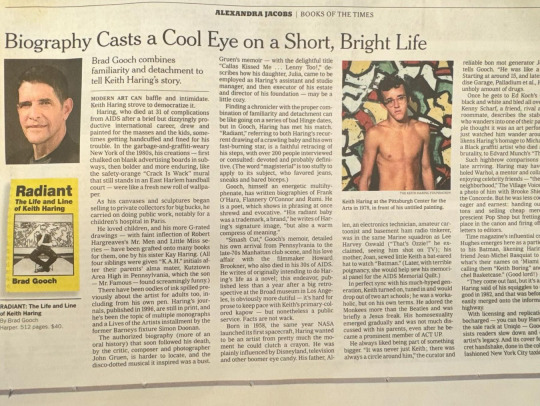
Book Review:
‘Radiant: The Life and Line of Keith Haring,’ by Brad Gooch
A New Keith Haring Biography Draws the Most Complete Picture Yet
In his thoroughly researched “Radiant,” Brad Gooch considers the short, blazing life of the ’80s artist, activist and man about downtown.
A photograph of Keith Haring shows a young shirtless man, with curly hair and large clear glasses, from the waist up.
Behind him is a brightly colored red, yellow, green and black painting that suggests bodies in motion.
Modern art can baffle and intimidate. Keith Haring strove to democratize it.
Haring, who died at 31 of complications from AIDS after a brief but dizzyingly productive international career, drew and painted for the masses and the kids, sometimes getting handcuffed and fined for his trouble.
In the garbage-and-graffiti-weary New York of the 1980s, his creations — first chalked on blank advertising boards in subways, then bolder and more enduring, like the safety-orange “Crack Is Wack” mural that still stands in an East Harlem handball court — were like a fresh new roll of wallpaper.
As his canvases and sculptures began selling to private collectors for big bucks, he carried on doing public work, notably for a children’s hospital in Paris.
He loved children, and his more G-rated drawings — with faint inflection of Robert Hargreaves’s Mr. Men and Little Miss series — have been grafted onto many books for them, one by his sister Kay Haring. (All four siblings were given “K.A.H.” initials after their parents’ alma mater, Kutztown Area High in Pennsylvania, which the son — Mr. Famous — found screamingly funny.)
There have been oodles of ink spilled previously about the artist for adults too, including from his own pen. Haring’s journals, published in 1996, are still in print, and he’s been the topic of multiple monographs and a Lives of the Artists installment by the former Barneys fixture Simon Doonan.
The authorized biography (more of an oral history) that soon followed his death, by the critic, composer and photographer John Gruen, is harder to locate, and the disco-dotted musical it inspired was a bust. Gruen’s memoir, with the delightful title “Callas Kissed Me … Lenny Too!,” describes how his daughter, Julia, came to be employed as Haring’s assistant and studio manager, and then executor of his estate and director of his foundation — maybe a little cozy.
A New Keith Haring Biography Draws the Most Complete Picture Yet
In his thoroughly researched “Radiant,” Brad Gooch considers the short, blazing life of the ’80s artist, activist and man about downtown.
March 3, 2024, 5:00 a.m. ET
A photograph of Keith Haring shows a young shirtless man, with curly hair and large clear glasses, from the waist up. Behind him is a brightly colored red, yellow, green and black painting that suggests bodies in motion.
Keith Haring at the Pittsburgh Center for the Arts in 1978, in front of his untitled painting.The Keith Haring Foundation
When you purchase an independently reviewed book through our site, we earn an affiliate commission.
RADIANT: The Life and Line of Keith Haring, by Brad Gooch
Modern art can baffle and intimidate. Keith Haring strove to democratize it.
Haring, who died at 31 of complications from AIDS after a brief but dizzyingly productive international career, drew and painted for the masses and the kids, sometimes getting handcuffed and fined for his trouble.
In the garbage-and-graffiti-weary New York of the 1980s, his creations — first chalked on blank advertising boards in subways, then bolder and more enduring, like the safety-orange “Crack Is Wack” mural that still stands in an East Harlem handball court — were like a fresh new roll of wallpaper.

As his canvases and sculptures began selling to private collectors for big bucks, he carried on doing public work, notably for a children’s hospital in Paris.
He loved children, and his more G-rated drawings — with faint inflection of Robert Hargreaves’s Mr. Men and Little Miss series — have been grafted onto many books for them, one by his sister Kay Haring. (All four siblings were given “K.A.H.” initials after their parents’ alma mater, Kutztown Area High in Pennsylvania, which the son — Mr. Famous — found screamingly funny.)
There have been oodles of ink spilled previously about the artist for adults too, including from his own pen. Haring’s journals, published in 1996, are still in print, and he’s been the topic of multiple monographs and a Lives of the Artists installment by the former Barneys fixture Simon Doonan.
The authorized biography (more of an oral history) that soon followed his death, by the critic, composer and photographer John Gruen, is harder to locate, and the disco-dotted musical it inspired was a bust.
Gruen’s memoir, with the delightful title “Callas Kissed Me … Lenny Too!,” describes how his daughter, Julia, came to be employed as Haring’s assistant and studio manager, and then executor of his estate and director of his foundation — maybe a little cozy.
Finding a chronicler with the proper combination of familiarity and detachment can be like going on a series of bad Hinge dates, but in Gooch, Haring has met his match. “Radiant,” referring to both Haring’s recurrent drawing of a crawling baby and his own fast-burning star, is a faithful retracing of his steps, with over 200 people interviewed or consulted: devoted and probably definitive. (The word “magisterial” is too stuffy to apply to its subject, who favored jeans, sneaks and bared biceps.)
Gooch, himself an energetic multihyphenate, has written biographies of Frank O’Hara, Flannery O’Connor and Rumi. He is a poet, which shows in phrasing at once shrewd and evocative. “His radiant baby was a trademark, a brand,” he writes of Haring’s signature image, “but also a warm compress of meaning.”
“Smash Cut,” Gooch’s memoir, detailed his own arrival from Pennsylvania to the late-70s Manhattan club scene, and his love affair with the filmmaker Howard Brookner, who also died in his 30s of AIDS.
He writes of originally intending to do Haring’s life as a novel; this endeavor, published less than a year after a big retrospective at the Broad museum in Los Angeles, is obviously more dutiful — it’s hard for prose to keep pace with Keith’s primary-colored kapow — but nonetheless a public service. Facts are not wack.
Born in 1958, the same year NASA launched its first spacecraft[16], Haring wanted to be an artist from pretty much the moment he could clutch a crayon. He was plainly influenced by Disneyland, television and other boomer eye candy. His father, Allen, an electronics technician, amateur cartoonist and basement ham radio tinkerer, was in the same Marine squadron as Lee Harvey Oswald (“That’s Ozzie!” he exclaimed, seeming him shot on TV); his mother, Joan, sewed little Keith a bat-eared hat to watch “Batman.” (Later, with terrible poignancy, she would help sew his memorial panel for the AIDS Memorial Quilt.)
In perfect sync with his much-hyped generation, Keith turned on, tuned in and would drop out of two art schools; he was a workaholic, but on his own terms. He adored the Monkees more than the Beatles and was briefly a Jesus freak. His homosexuality emerged gradually and was not much discussed with his parents, even after he became a prominent member of ACT UP.
He always liked being part of something bigger. “It was never just Keith; there was always a circle around him,” the curator and reliable bon mot generator Jeffrey Deitch tells Gooch. “He was like a Pied Piper.” Starting at around 15, and later at the Paradise Garage, Palladium et al., Haring did an unholy amount of drugs.
Once he gets to Ed Koch’s Gotham, it’s black and white and bled all over. The artist Kenny Scharf, a friend, rival and onetime roommate, describes the stabbing victim who wanders into one of their parties: “People thought it was an art performance and just watched him wander around.”
Gooch likens Haring’s homage to Michael Stewart, a Black graffiti artist who died after police brutality, to Edvard Munch’s “The Scream.”
Such highbrow comparisons have been late arriving.
Haring may have out-Warholed Warhol, a mentor and collaborator, in enjoying celebrity friends — “there goes the neighborhood” The Village Voice captioned a photo of him with Brooke Shields — and the Concorde. But he was less cool than hot, eager and earnest: handing out free buttons and selling cheap merch at his prescient Pop Shop but fretting about his place in the canon and firing off indignant letters to editors.
Time magazine’s influential critic Robert Hughes emerges here as a particular Joker to his Batman, likening Haring and his friend Jean-Michel Basquiat to “those two what’s their names on ‘Miami Vice’” and calling them “Keith Boring” and “Jean-Michel Basketcase.” (Good lord!)
“They come out fast, but it’s a fast world,” Haring said of his squiggles to Charles Osgood in 1982, and that was before we all uneasily merged onto the information superhighway.
With licensing and replication now turbocharged — you can buy Haring wares on the sale rack at Uniqlo — Gooch’s book insists readers slow down and consider the artist’s legacy. And its cover feels like a secret handshake, done in the colors of an old-fashioned New York City taxicab.
RADIANT: The Life and Line of Keith Haring | By Brad Gooch | Harper | 512 pp. | $40
1 note
·
View note
Photo
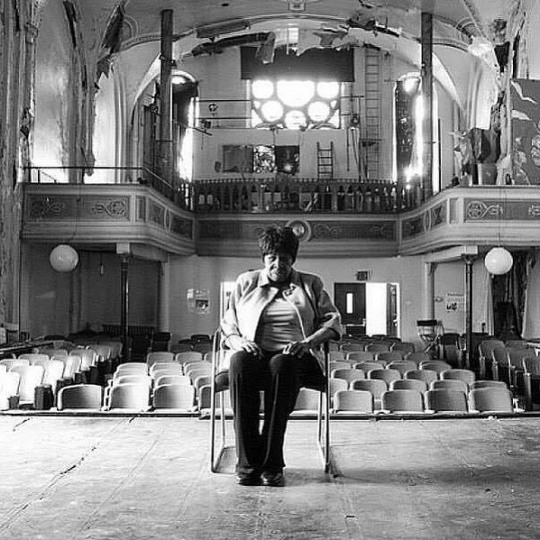
Today We Honor Dr.Josephine English Dr. Josephine English was an American gynecologist who was the first black woman to open a private practice in New York. She was also known for her work in real estate and health care, in addition to her philanthropy towards the arts. English was born on December 17, 1920 to Jennie English and Whittie Sr. in Ontario, Virginia. She moved to Englewood, New Jersey in 1939. Her family was one of the first black families in Englewood. She attended Hunter College for her bachelor's degree until 1949, and earned her Master's in Psychology at New York University. She initially wanted to become a psychiatrist, but ended up choosing gynecology after discovering her interest at Meharry Medical College where she earned her medical degree in gynecology. Dr.Josephine English opened her practice at Harlem Hospital. Once in Brooklyn, she opened up a women's health clinic in Bushwick in 1956, as well as another in Fort Greene two decades later. During her career, English helped deliver 6,000 babies, including the children of Malcolm X, Betty Shabazz, and Lynn Nottage. English's interest in health care lead her establish the Adelphi Medical Center and child care programs, such as Up the Ladder Day Care and After School Program. Her passion for theater led her to establish the Paul Robeson Theater from a dilapidated church. She helped actors create performances to educate the populace on health and nutrition. CARTER™️ Magazine carter-mag.com #wherehistoryandhiphopmeet #historyandhiphop365 #cartermagazine #carter #drjosephineenglish #blackhistorymonth #blackhistory #history #staywoke https://www.instagram.com/p/CpNKrgALUdK/?igshid=NGJjMDIxMWI=
#wherehistoryandhiphopmeet#historyandhiphop365#cartermagazine#carter#drjosephineenglish#blackhistorymonth#blackhistory#history#staywoke
30 notes
·
View notes
Text
📚🎙#ArtIsAWeapon DJ-Scholar Lynnée Denise @lynneedenise will discuss her new book "Why Willie Mae Thornton Matters" with actor-poet Saul Williams @saulwilliams and musician-composer Tamar-kali @tamar_kali at the #SchomburgCenter for Research in Black Culture @schomburgcenter tomorrow, Tuesday, 10/3, at 6:30 PM.
📍515 Malcolm X Blvd, New York, NY 10037

Reposted from @schomburgcenter
"Thornton, a blues woman, gave us 'Hound Dog' and other songs that changed the course of American music." Register at
https://www.eventbrite.com/o/schomburg-center-for-research-in-black-culture-1711628110?aff=eand
•
Reposted from @lynneedenise Final stop in the US will be soulful as hell. Having a conversation about this book across the street from where James Baldwin and Sammy Davis Jr. were born (Harlem Hospital ) is no small thing, but to be in conversation with two of the greatest musical, literary, theatrical, and cinematic minds in my generation @tamar_kali and @saulwilliams is beyond exciting…
Pairing them to discuss this book promises an evening of border crossing references, fresh ideas, and improvisational jazz like exchanges on the life of Willie Mae Thornton. This is what this woman deserves, critical attention on her legacy.
Register at @schomburglive and @schomburgcenter Schomburg for free tickets (registration closing soon)…meet us at 6:30pm tomorrow, October 3! Soon come.
#WillieMaeThorton #LynnéeDenise #BlackWomen #MusicInnovators
#MusicHistory #LibraSeason
0 notes
Text
August 30 2022 Boulder

One of the strongest and most resilient people I have ever known is my friend Lori Canova. Lori was the CEO of the I Have a Dream Foundation of Boulder County for nearly twenty three years. She and I first met when she was interviewing for the position and I was on the board. I helped to hire her and it was one of the best decisions I’ve ever made. She was one of the best Executive Directors with whom I’ve ever worked and she led the organization to become one of the strongest in Boulder County and one of the leading I Have a Dream franchises in the country.
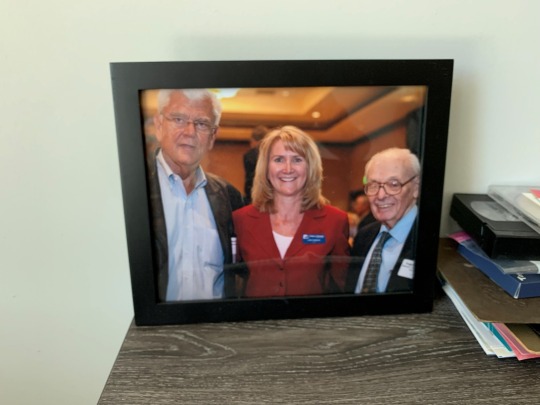
This is a picture of Lori with Bob Greenlee, one of the sponsors of the first I Have a Dream class in Boulder County, and Eugene Lang, the founder of the I Have a Dream national foundation. In 1981 Eugene Lang returned to the elementary school he had attended in East Harlem to speak to the graduating sixth graders about their future. On the way to the podium the principal told him that three quarters of the students would probably never finish high school. Mr. Lang changed his speech and told them if they finished high school he would provide them with college tuition. Now I Have a Dream foundations across the country are helping kids from underserved populations stay in school and graduate!

One of the keys to Lori’s success in life is probably her creative partnering with her husband, Brent, who is equally successful in his life. They are a loving, supportive couple who inspire me to believe that true love and a sustaining partnership are not only ideals but possible in the real world. They are models for not only their children, Andrea and David, but also for the rest of us. And now they are grandparents because Andrea and her partner are the proud parents of a baby girl born in June! So Lori and I get to be grandmothers together!


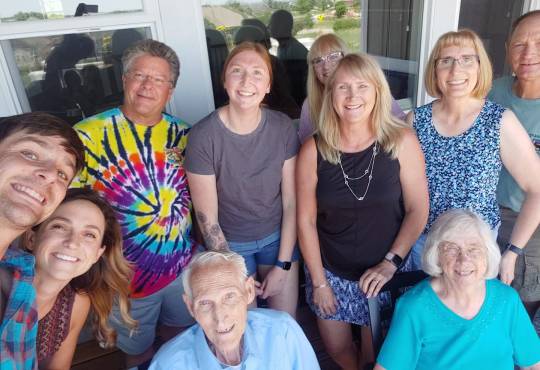
Into all seemingly perfect lives at least a little rain must fall and Lori has experienced a torrential amount of disasters in the last year. In December of 2021 Lori had a lot of pain in her back and they rushed her to the hospital, where she had emergency surgery for a tumor on her spine. It was a tremendously complicated surgery and left her paralyzed from the waist down. For the last year she has been in therapy and rehabilitation to learn to walk again. Since she was admitted to Craig Rehabilitation Center she has made tremendous progress and is now walking with a walker and riding a recumbent bike.

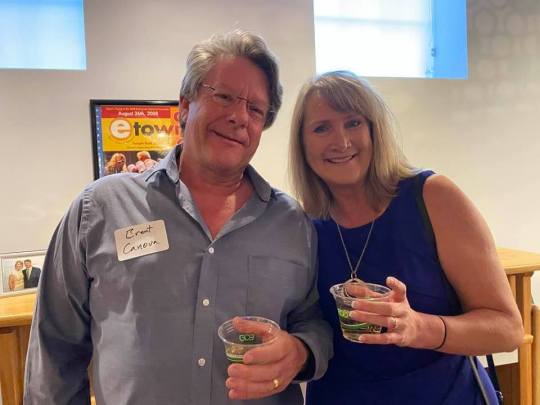
The next disaster that befell Lori’s family was that while she was in the hospital after her surgery their home in Superior burned to the ground in the Marshall fire. Brent and their son, David, tried to save whatever they could but it happened so quickly that nearly everything was lost. Now they are living in an apartment in Boulder while they work on the reconstruction of their home on the same site where it burned. I visited them there today and brought lunch. Lori and I sat outside on their balcony overlooking the city and the mountains and talked about the amazing, terrible, and wonderful things which have happened in our lives in the last few years.


Despite everything that has happened in the last few years Lori maintains an attitude of hope and joy. She is one of the most positive, uplifting, happy, and inspiring people I’ve ever known and I’m blessed to have her as a dear friend as we navigate the waters of our lives in the future and continue working together to build a stronger and more resilient community.
0 notes
Text
" thank I made it thank God I made it thank God I made it I made it I made it I made it thank God I made it thank God I made it thank God " first Baptist Harlem Baptist church FYI Grove Baptist first Baptist Harlem Baptist church FYI #christianpraiseteam #danyardandsonbarnwellfuneralhome of barnyard danyardandsonbarnwellfuneralhome of barnyard time now for we still have praise and worship prayers for the ones who passed away the ones who are at home living well or in nursing homes in hospitals children battling cancer in doctor's offices in prison in police stations missing wherever we're praying for you let there be justice let there be peace let there be love as we continue #appreciationprogramforbrothertonyghost may to June at the #kidshistoryprogram center #appreciationprogramforbrothertonyghost
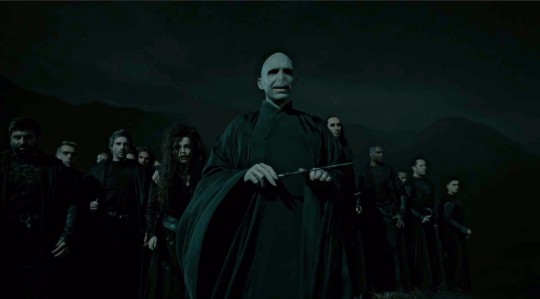
0 notes
Text
SAFETY NET PROVIDERS URGE NY TO RECONSIDER CARVE-OUT

In March 2020, under former Governor Andrew Cuomo's administration, the New York Medicaid Redesign Team advised that the state carve-out pharmacy benefits from the Medicaid program because of concerns pertaining to pharmacy spending and provider transparency. The reform fundamentally shifts prescription drug reimbursement from a managed care model to a fee-for-service model, making the state responsible for the pharmacy benefit rather than MCOs and PBMs. To date, seven other states, including California, West Virginia, Wisconsin, Missouri, Ohio, Kentucky, and Tennessee, have carved-out pharmacy benefits from their Medicaid programs.
The state's decision was quickly met by opposition from safety net providers, 340B covered entities, community leaders, and nonprofits. They warned legislators of the harmful impact the move would have on the program and its beneficiaries' access to care. As a result, the carve-out was delayed in April 2021.
After a two-year postponement, the New York State Department of Health announced earlier this year that it would proceed with the carve-out. Beginning April 1, 2023, Medicaid members will begin receiving their pharmacy benefits under the state's new model, NYRx.
Despite the state's decision, those in opposition to the change continue to make a focused effort to derail the carve-out as the April start date approaches. Save New York's Safety Net is a statewide coalition of providers and community organizations that represent vulnerable populations in the state. The coalition is fighting the transition because of its potential to disrupt access to specific drugs and its repercussions for community health centers.
For example, State officials that support the move to a fee-for-service model believe that it will increase program revenue by $250 million. That being said, under the current program structure, this money goes to safety-net providers around the state as a part of the 340B drug discount program. The program provides qualifying hospitals and clinics that treat low-income and uninsured patients with pharmaceutical drugs at a significantly lower cost. These savings help to fund programs such as vaccination clinics, housing assistance, transportation, outreach, and nutrition services. If the carve-out is carried out, it will divert these funds and lead to a reduction of services, clinic closures, and disruptions to the coordination of care.
Jacqui Kilmer, CEO of Harlem United, is amongst those in opposition to the state's decision. She expects the carve-out to increase healthcare costs and views the measure as bad government from a policy and legal standpoint. Nevertheless, the former business attorney is hopeful and strongly believes there is still a chance to convince Gov. Hochul to repeal the carve-out. According to Kilmer, "she can do that on her own without legislative approval, any kind of other oversight, budgetarily, or from the Department of Health."
Among lawmakers, several representatives sponsored bills in the prior legislative session to overturn the pharmacy carve-out, but they were unsuccessful. These efforts are expected to be reintroduced this year, and legal challenges are anticipated if NYRx is implemented.
In addition to the coalition's concerns surrounding the shift, there is also data that suggests New York and other states may want to reexamine carving-out pharmacy benefits. In a 2018 report from the Association for Community Affiliated Plans (ACAP), the trade association discovered that when compared to fee-for-service models, managed care improves the quality of care and saves significantly more on brand name and generic drugs. ACAP analyzed Medicaid drug spending over a six year period and found the following:
Managed care drug benefits produced considerable savings despite increasing prescription drug costs. "The average net (post-rebate) cost per MCO-paid Medicaid prescription during 2016 was $37, 73 percent of the average net cost of Medicaid prescriptions paid in the fee-for-service (FFS) setting during 2017, which was $50."
Managed care Rx services had greater utilization of generic drugs, which helped to reduce drug expenses. "In 2017, generic drugs represented 88.1 percent of MCO-paid Medicaid prescriptions versus 83.7 percent in the FFS setting."
Six states that implemented managed care prescription benefits only had a 1 percent increase in net costs per prescription between 2011 and 2014. On the other hand, seven states that carved-out pharmacy benefits saw a 20 percent increase in net costs per prescription during the same period. These seven states missed out on an estimated $307 million in savings in 2014 in comparison to the six states that transitioned to managed care.
Carving-in prescription drug benefits decreases complexity and improves the quality of care for beneficiaries because managed care plans can coordinate with providers more efficiently.
In 2021, Medicaid expenses were the largest spending category, accounting for 27 percent of state budgets on average. In the same year, Medicaid spent roughly $80.6 billion on outpatient prescription drugs. Some states have chosen to transition to fee-for-service models and carve-out pharmacy benefits to decrease program expenditures. While this is one strategy to try and reduce costs, states should also turn to opportunities to improve efficiency and cost avoid in their Medicaid plans.
Click here to learn more.
1 note
·
View note
Text
NYPD watchdog CCRB hosts January board meeting in Harlem
The Civilian Complaint Review Board (CCRB) kicked off the year uptown, with the NYPD watchdog holding 2023’s first monthly board meeting at Harlem Hospital Center last Wednesday, Jan. 11.
“[We want] people in this neighborhood to have easy access to our board members and share their experiences and ask questions,” said CCRB interim chair Arva Rice.
For local violence-interruption groups like…
View On WordPress
0 notes